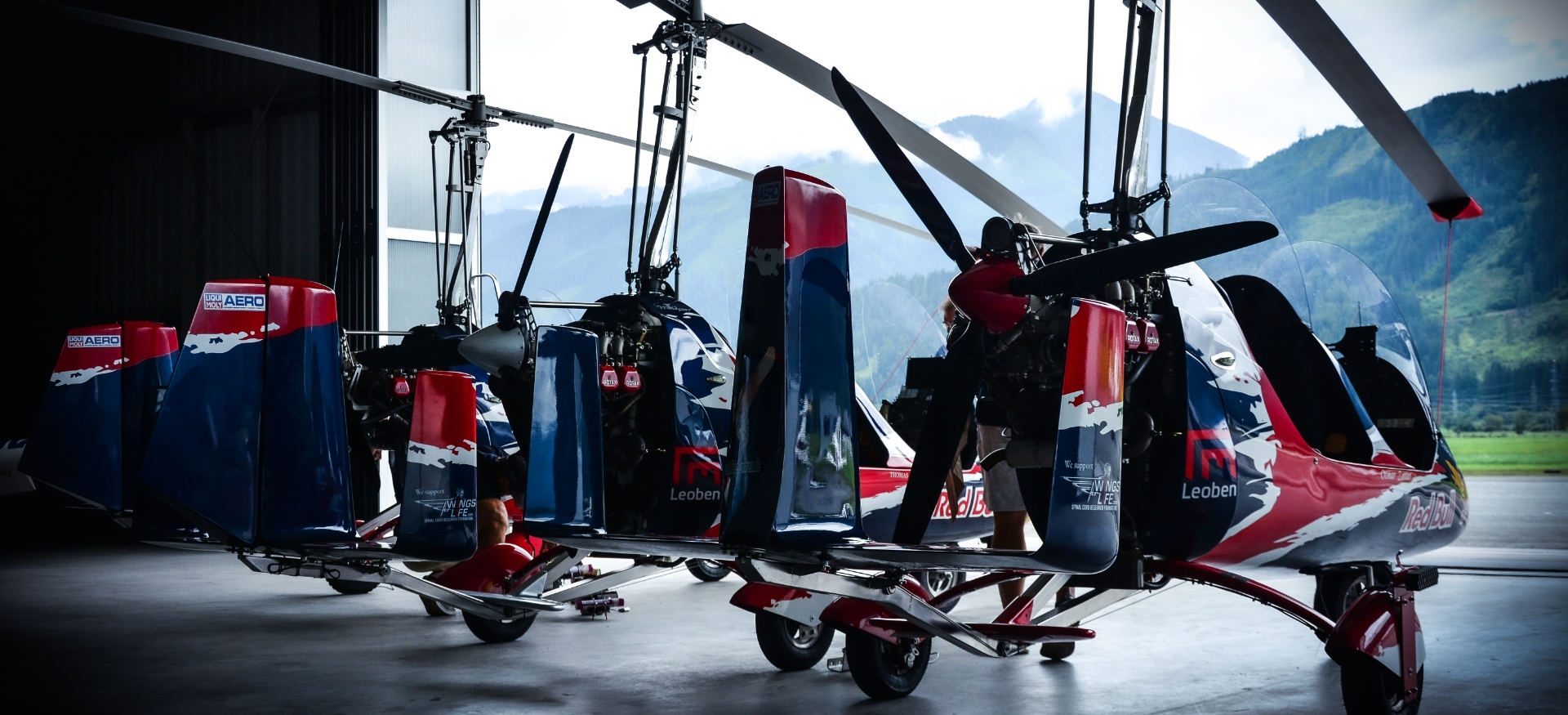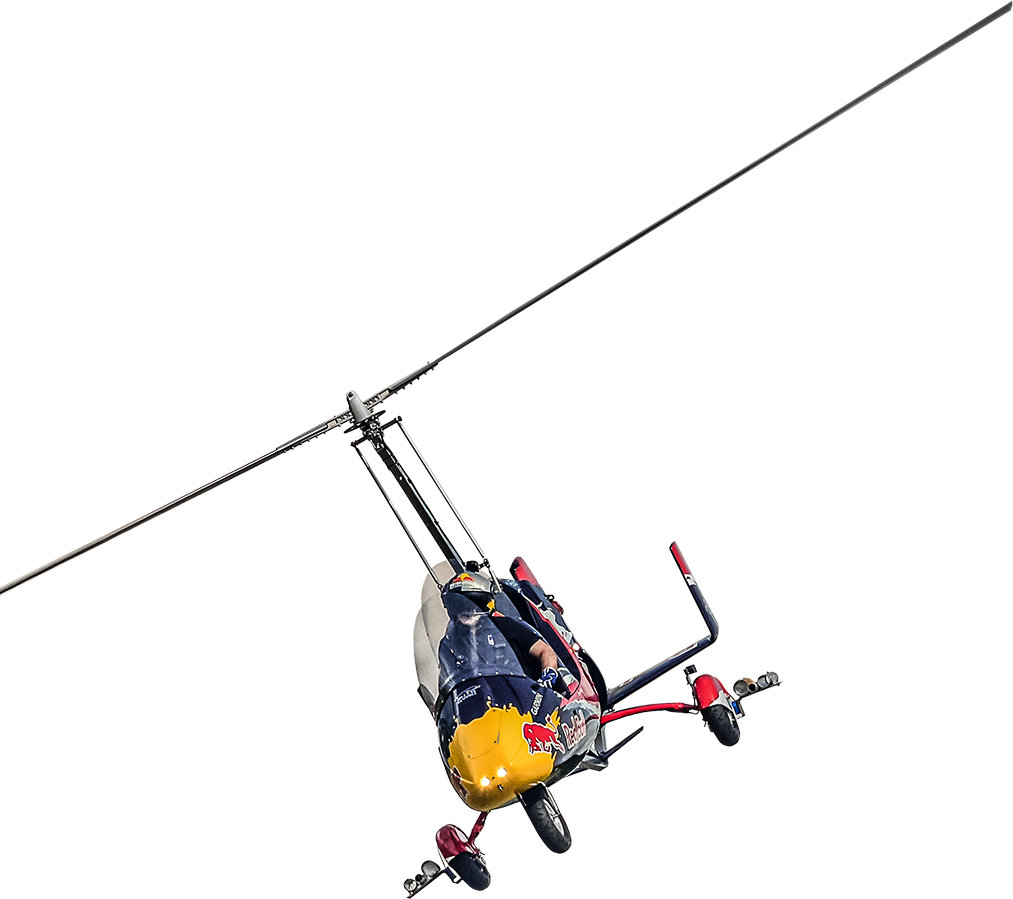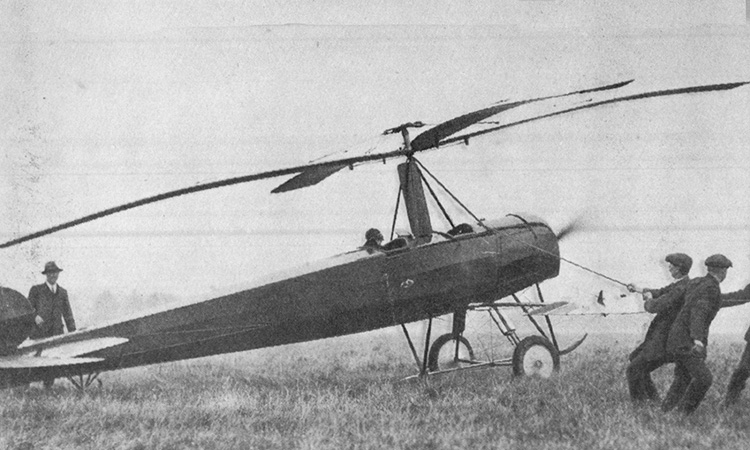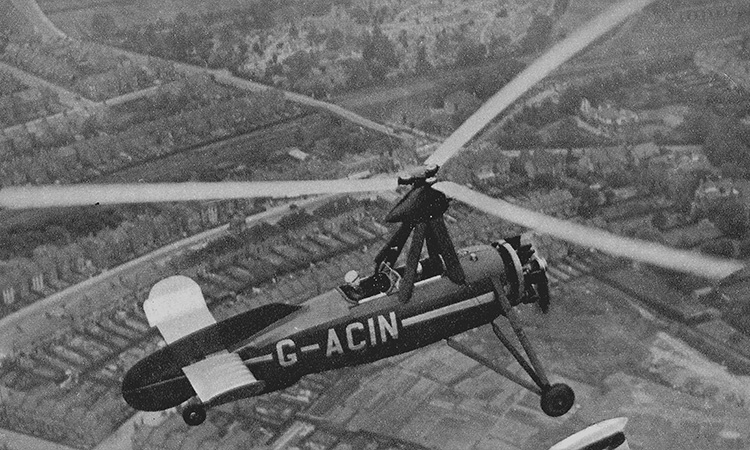
Speedy
Rotorwings

2.7 m
gyrocopter d-mobz 2
5.1 m x 1.9 m
Technical data
Model gyrocopter d-mobz 2
Length x Breadth x Height
5.1 m x 1.9 m (1.6m) x 2.7 m
Rotor diameter
8.4 m
Top speed
185 km/hr
Climb rate
4 m/sec
Max. take-off mass
450 / 560 kg
Load capacity
1 passenger (max. 100 kg)
Engine
Rotax 914 Turbo (115 PS) with reduction gearbox 1:2,43
gyrocopter
A gyrocopter is a rotary wing aircraft for up to two passengers, where the rotor, on the rear tilted rotor axis, passively rotates due to the airflow. The wing profile of the rotor blades means that the requisite uplift can occur even when there is a slow forward flight. In contrast to a helicopter, hovering and vertical starts and landings are not possible. Gyrocopters are regarded as being more environmentally-friendly.
Development
history
The first flight experiments on the fundamental principle of a gyrocopter.
After the initial flight attempts by Pere Sastre Obrador failed, Spaniard Juan de la Cierva continued with the basic principle of the gyrocopter and experimented with ‘rotating wings’. After one of the bombers he developed crashed, his goal was to develop an aircraft which could not stall.

The first successful flight attempt
The first successful flight attempt was documented on 9th January 1923 in Getafe, Spain. De la Cierva successfully completed the experiment with his C4. The C6 followed in 1925 and the C8 in 1928. The Spaniard found key solutions for stabilising the rotor, which were later used for helicopters too.

The gyrocopter boom revolutionised flying
From that time on, gyrocopters were built in the USA, in the UK, in Germany, in the Soviet Union and in France in particular.

The development of the helicopter was promoted
After the death of the Spanish inventor Juan de la Cierva in 1938, different developers, inventors and technicians picked up on the basic idea, using it to heavily promote the development of the helicopter and other craft. In France new world records were set using gyrocopters. These aircraft were even used during the Second World War.

Today
The popularity of the gyrocopter has not demised – in 2009 and 2010 the first round-the-world trip was documented in these popular aircraft. The machines are very popular in the private and professional domains alike. Gyrocopters are impervious to turbulence and are regarded as being more environmentally-friendly.
